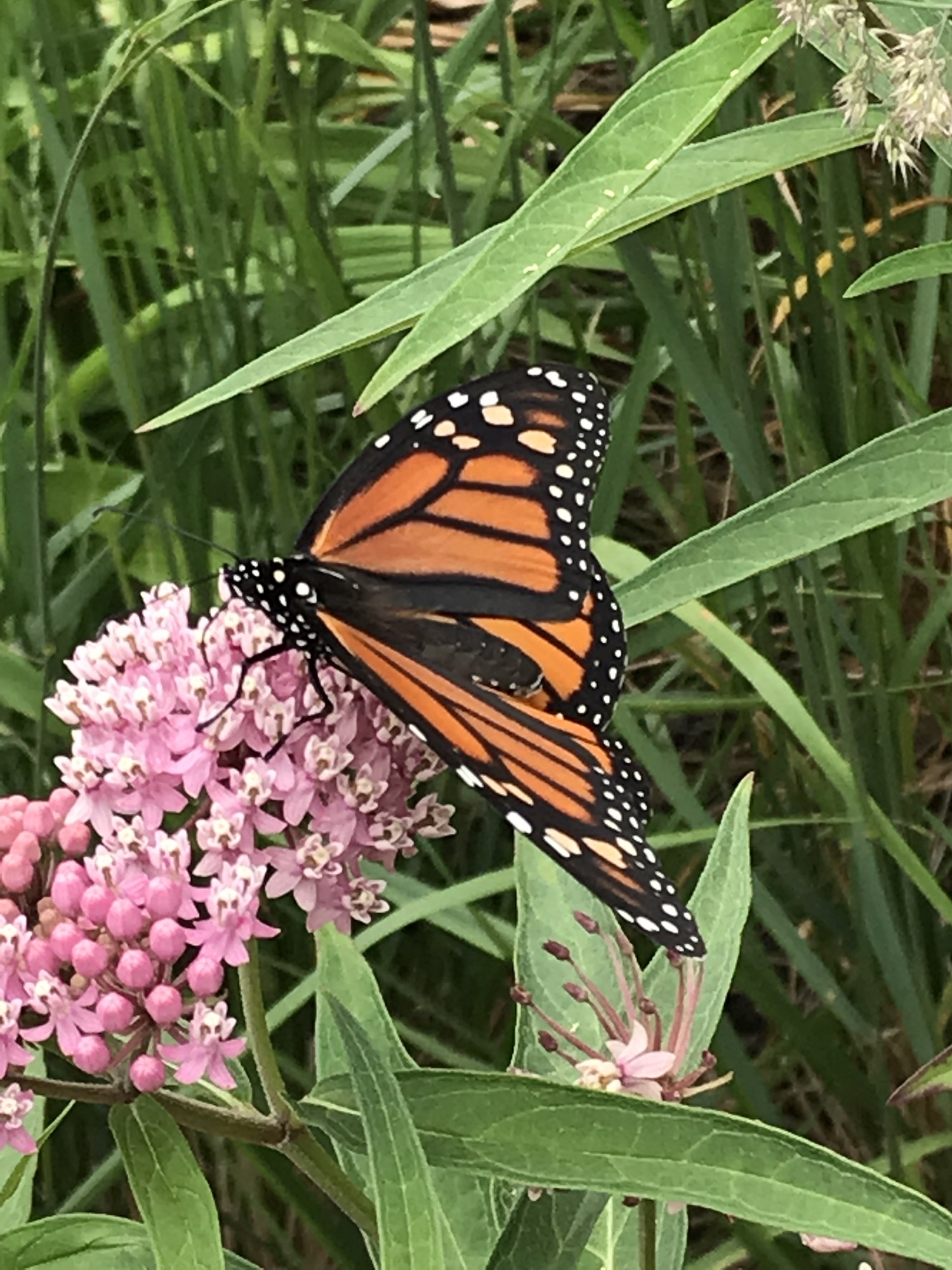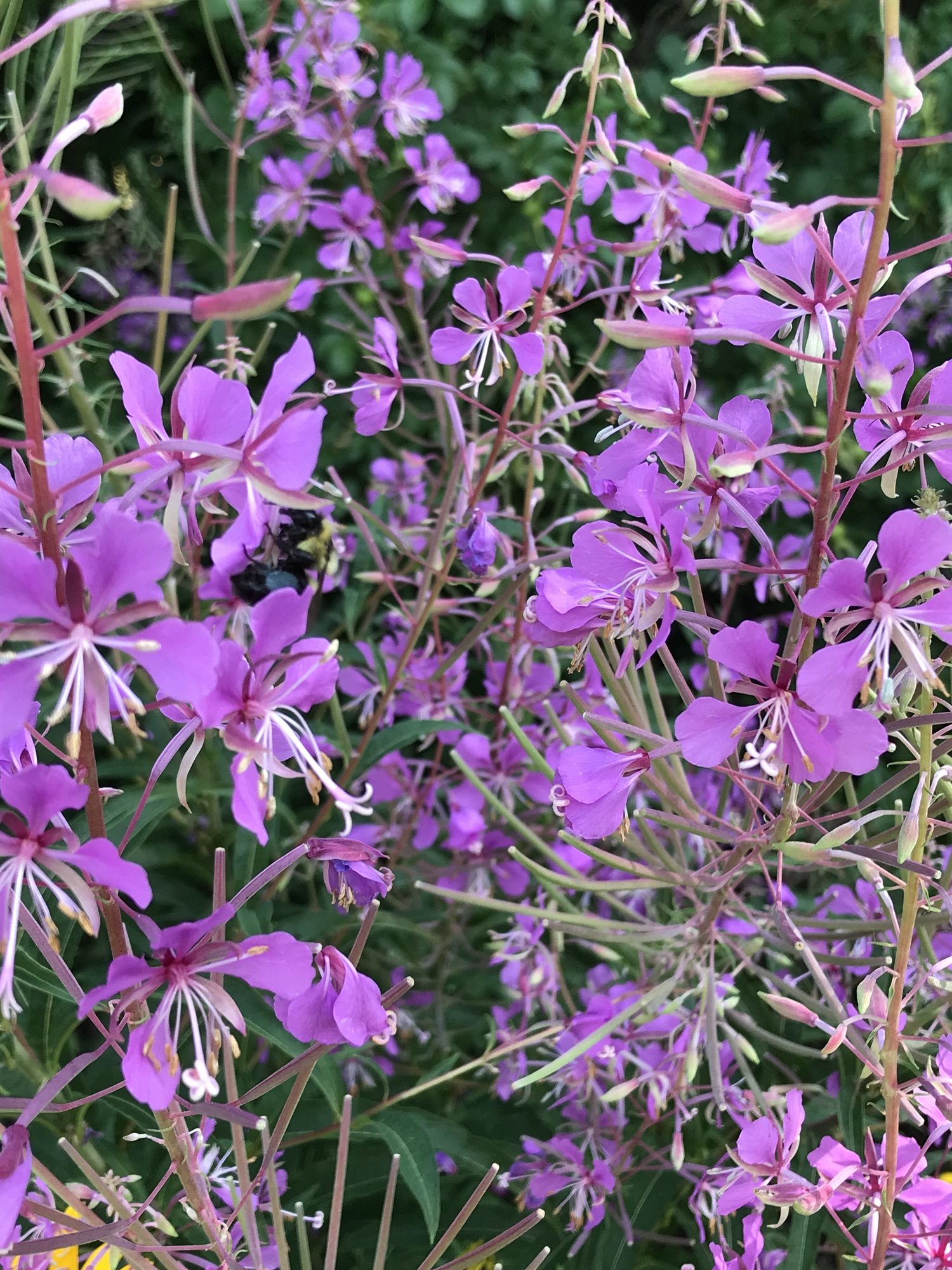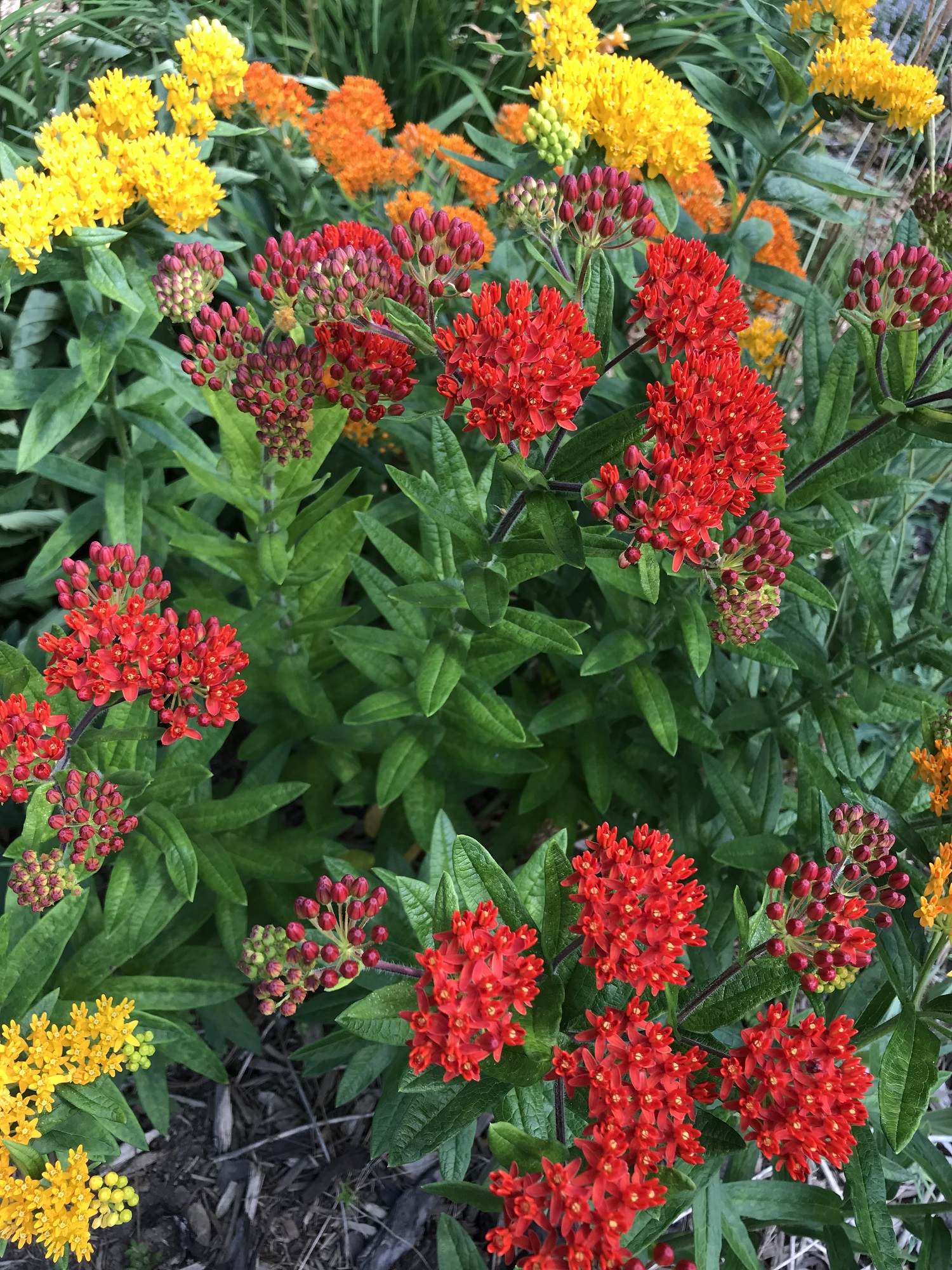In the Garden
Story and photos by Julianne Labreche
Remember that old saying? “Sticks and stones can break your bones but names will never hurt you.” Well, don’t believe it. Name-calling does hurt people. And name-calling can hurt a plant’s reputation too. For a plant, there’s nothing worse than being called “a weed.”

One definition of a weed is simply a plant in the wrong place. If the gardener doesn’t want it where it is, it’s a weed. These “weeds” often grow quickly, competing for light, space and water, and choking out the favoured plants. Being unwanted, weeds are yanked up, hoed under, chemically sprayed, burned or otherwise destroyed. Removing them can take a lot of time and energy. And they often come back. For a gardener who wants everything tidy, weeds can diminish the joy of gardening.
Some plants, such as chickweed, dandelions, creeping Charlie, purslane and Canada thistle all deserve to have weed in their name. They appear in turfgrass and garden beds, aggravating any who want a pristine lawn or a tidy garden. Noxious weeds pose a threat to agriculture, livestock and people. Ontario’s Weed Control Act lists 25 noxious weeds, among them: wild parsnip, giant hogweed, dog-strangling vine, poison ivy and ragweed.
There are other plants, though, that have the word weed in their common name but don’t deserve it. Maybe it is time to come up with new names for these plants, especially native ones. Many of these so-called “weeds” have co-evolved with native insects, including pollinators, and are worthy additions to a garden.
These plants are weeds in name only:
Sneezeweed (Helenium spp.) – This plant does not make you sneeze, nor is it a weed. A late-blooming native plant with yellow, daisy-like flowers, it is a valuable nectar source for monarch butterflies during their fall migration, as well as bumblebee queens preparing to overwinter.
Spotted Joe Pye weed (Eutrochium maculatum) – This tall, billowy Ontario native attracts many pollinators, including bee and butterfly species. It grows well at the back of my garden. Although it prefers partial shade and moist soil, it will grow in full sun. In mid-summer, it bursts into bloom with large clusters of pink tubular-shaped florets. For any gardener, it’s definitely a plant worth getting to know. In parts of Ontario, it is found along roadside ditches and by edges of lakes and streams.
Butterfly weed (Asclepias tuberosa) –This is a showy perennial for any sunny pollinator garden. It blooms in late summer in my front garden. The native plant and its cultivars are available in many nurseries. With its vibrant bright orange, yellow and red flower heads, it is a real show stopper. Butterfly weed requires minimal care and prefers well-drained soil. Like other milkweeds, it is a nectar source for many insects and is the host plant of the monarch butterfly caterpillar.
Common milkweed (Asclepias syriaca) – I didn’t set out to plant common milkweed, having been told it was a fast spreader. Instead, it found me. It just appeared one day in my garden. I am keeping a close eye on it but so far, it hasn’t been a problem. Certainly, its importance cannot be underestimated. As a valuable host plant, it is critical to the eastern monarch population. Older stems, I’ve learned, can be cut back to ground level to encourage new, tender shoots, attractive to monarch females looking to lay their eggs.
Swamp milkweed (Asclepias incarnata) – It is difficult to find a better plant than this one for any home pollinator garden. My own swamp milkweed comes up predictably, year after year, with its big, showy flowers on long, slender stems. Although it prefers swampy conditions, as the name suggests, it does just fine in my dry, sunny front garden. It does not spread by rhizomes and therefore is a well-behaved plant that doesn’t spread aggressively. I have a white cultivar but prefer the native one.

Fireweed (Chamerion angustifolium) – This tall, showy purple-flowered plant can be found growing in the model backyard garden at Fletcher Wildlife Garden in west central Ottawa. It is not suited to all gardens as its wind-dispersed seeds germinate readily. However, for the right space, such as a landscape with dry, poor soil where it will not spread too quickly, it can be a welcome addition. Fireweed is important because it provides nectar and pollen for bees, moths and butterflies. It is also one of the first plants to blanket an area after a forest fire, hence its name. Yukon adopted the fireweed as its floral emblem in 1957.
Jewelweed (Impatiens capensis) – This is an annual plant native to North America. Its dainty orange flowers look something like a snapdragon. It grows in moist semi-shade areas such as in ditches, along creeks and in swamps. It is a favourite plant of the ruby-throated hummingbird, which migrates to the Ottawa region every spring. Jewelweed grows tall, about one to one and a half metres, and blooms from late spring to early fall. It would be a great addition to any damp garden area.

Ironweed (Vernonia spp.) – This tall wildflower grows in parts of Ontario, Manitoba and the northern United States and has short-lived summer blooms that attract many different kinds of butterflies and bees. Preferring sun to shade, it is also a good addition for a pollinator garden.
Finally, on this subject of weeds, I might add that I do not mind weeding my garden. I find it quite relaxing. Over the years, I’ve learned that there are many kinds of weeds. Some are unwelcome, but some so-called “weeds” are plants I love.
Beware!
Some non-native plants being sold these days don’t play nice with other plants. Because they are aggressive spreaders, these plants are called invasive. They cause harm when planted near natural areas, including woodlands, meadows and waterways. They quickly choke out other plants, especially native plants upon which pollinators and other insect species depend. Getting rid of them is difficult and may be costly. Plants such as goutweed (Aegopodium podagraria) and common buckthorn (Rhamnus cathartica), for instance, can be challenging to remove.
To learn more about invasive plants, go online to the Ontario Invasive Plant Council and download its free brochure, Grow Me Instead. More information is available at ontarioinvasiveplants.ca.
Recently, some people have started to advocate that certain invasive plant species be banned, or at least, when sold, be clearly labelled as hazardous in natural spaces. Information is available from the Canadian Coalition for Invasive Plant Regulation (CCIPR) at ccipr.ca.
Julianne Labreche is a member of the Master Gardeners of Ottawa-Carleton, a Master Naturalist and a freelance writer.






